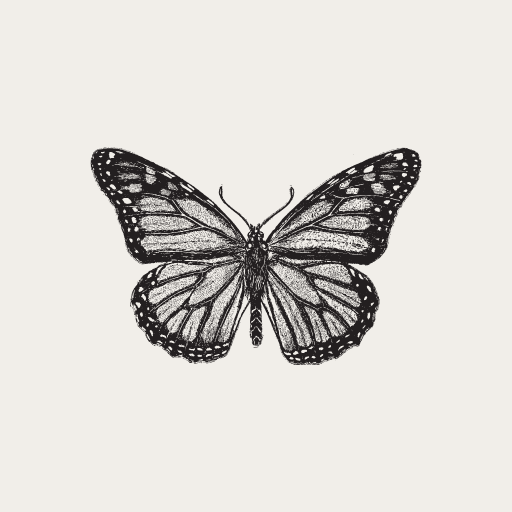How They Contribute to Birds, Mammals, and Insects
Native plants are the unsung heroes of our local ecosystems. While they often go unnoticed, their role in sustaining wildlife populations cannot be overstated. By incorporating native plants into our gardens, communities, and conservation projects, we are directly enhancing the habitats for countless species of birds, mammals, and insects. This simple yet powerful action can help restore balance to our ecosystems and support biodiversity at the most fundamental levels.
The Role of Native Plants in Local Ecosystems
Native plants are perfectly suited to local environments. They thrive in the same climate and soil conditions as the wildlife that depends on them. Over time, they have adapted to the region’s needs and have become an essential part of the ecological web. Unlike non-native plants, which may require extra resources and fail to provide the necessary habitat for local species, native plants offer a sustainable option for sustaining the natural world around us. Their deep connection with the land makes them a cornerstone of local ecosystems, supporting a range of species—from small insects to larger mammals.
How Native Plants Support Birds and Mammals
The connection between native plants and wildlife is undeniable, especially for birds and mammals. Trees, shrubs, and grasses provide nesting sites, shelter, and, most importantly, food. For example, native fruit-bearing shrubs are essential food sources for local birds. Trees like oaks and pines offer both shelter and food for numerous species of birds and mammals, from squirrels to woodpeckers.
In urban areas, native plants are often the only source of food for migrating birds and local wildlife. Without them, these animals would struggle to find the resources they need to survive. As we continue to lose habitat to urbanization and agriculture, it becomes even more crucial to create spaces where native plants can flourish, helping maintain the balance of local ecosystems.
The Symbiotic Relationship Between Native Plants and Insects
Insects, including bees, butterflies, and moths, have an intrinsic relationship with native plants. Many insects depend on specific plants for nectar, pollen, or leaf material. Monarch butterflies, for instance, are heavily reliant on milkweed to lay their eggs, while native bees gather nectar and pollen from a variety of native wildflowers.
The decline of native plants often leads to the decline of insect populations, which can have cascading effects on the entire ecosystem. These insects are vital pollinators for both native plants and agricultural crops. By supporting native plants, we are not only helping insects but also ensuring that pollination continues to thrive, benefiting all of us.
The Long-Term Benefits of Supporting Local Wildlife
By fostering the health of local wildlife, we are promoting a balanced, thriving ecosystem. Healthy populations of birds, mammals, and insects help control pests, promote plant growth, and contribute to the overall health of the environment. Native plants create a living environment where these species can thrive, leading to long-term benefits for agriculture, gardening, and natural pest control.
As we work together to restore native habitats, we contribute to the recovery of biodiversity on a broader scale. Every action counts—whether it’s planting a native garden in your backyard or supporting local wildlife conservation efforts. The more native plants we restore, the stronger our local wildlife populations become.
How You Can Help
Incorporating native plants into your garden is one of the simplest yet most effective ways to contribute to wildlife conservation. Whether you’re planting a small patch of wildflowers or a larger native garden, every plant counts. Look for local nurseries that specialize in native species, and research what plants are native to your area. By choosing native plants, you’re not only creating a sanctuary for wildlife, but you’re also helping to restore the natural balance of the land.
Beyond gardening, supporting policies and conservation efforts that protect native plants is crucial. Educate others in your community about the importance of these plants and advocate for their protection. By taking small steps, we can all contribute to a healthier, more sustainable future for both wildlife and people.
Nurturing Nature, One Plant at a Time
Native plants are the foundation of healthy ecosystems. By fostering these plants, we are directly supporting local wildlife and helping to restore biodiversity. Every action, no matter how small, can make a significant difference in the conservation of our local environments. As we work together to protect and promote native plants, we ensure a thriving future for birds, mammals, insects, and ourselves.
When I look at a patch of wildflowers or a tree rooted deeply in the soil, I see not just beauty, but a quiet power. Each native plant tells a story of resilience, of adaptation, and of connection to something much larger than itself. These plants support our local wildlife in ways that are often invisible to the eye, yet their impact ripples through entire ecosystems. I believe in the power of every individual to make a difference. By planting one native plant, supporting one conservation initiative, we are contributing to a shared vision: a world where both people and wildlife can thrive in harmony. Let’s take that step together—our actions, no matter how small, matter.
